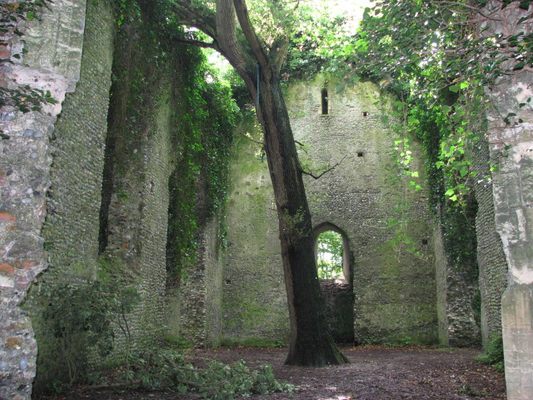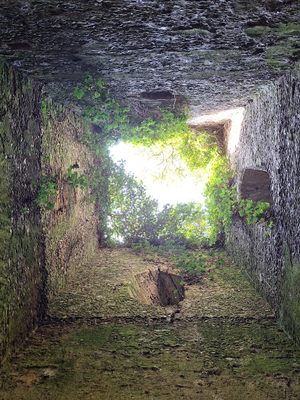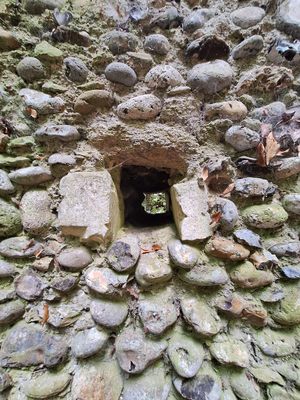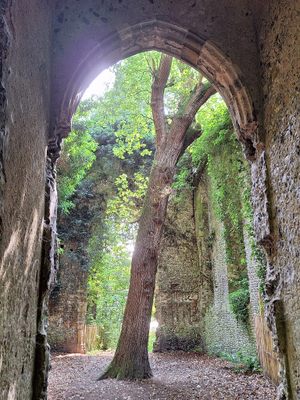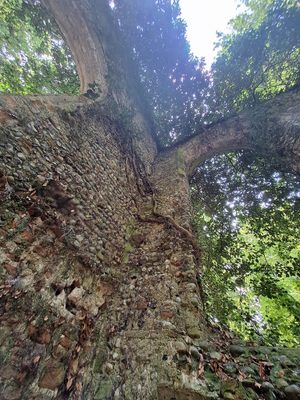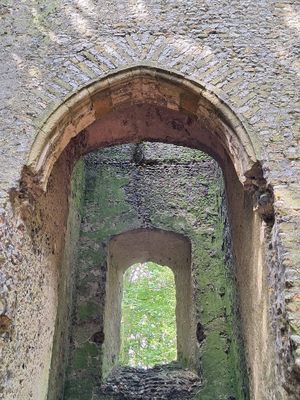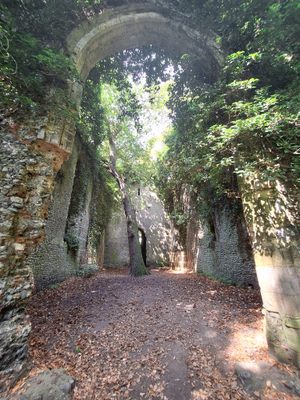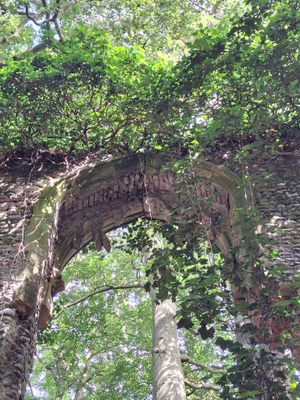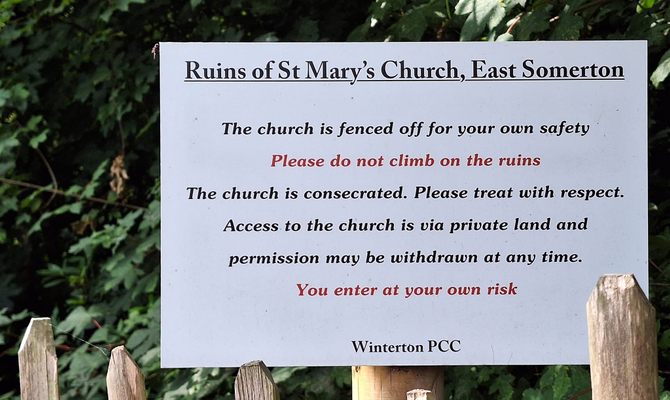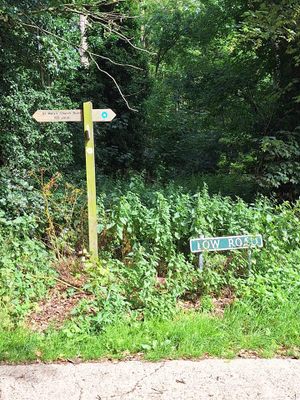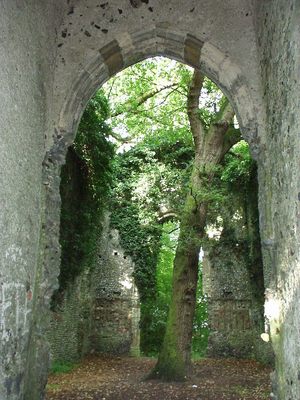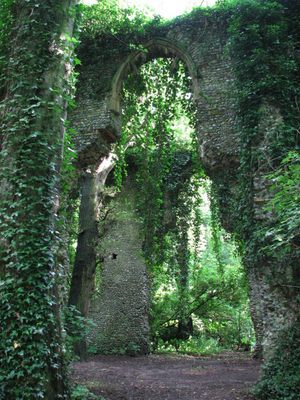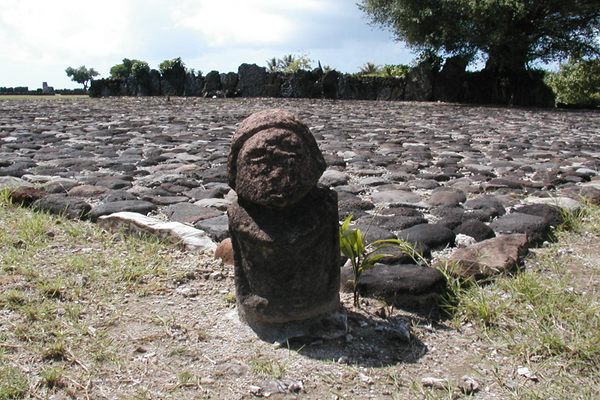About
The county of Norfolk contains the world’s greatest concentration of medieval churches, with over 650. Since some of these churches date from at least half a millennia ago, some have not survived as well as others.
In the woods of East Somerton barely stands one such church. St Mary’s church, with its glassless windows, tumbling walls, and a tower in which one can look up into the open sky, is the definition of a romantic ruin.
Dating from the 15th-century, St Mary’s went from serving its own parish to becoming part of the larger parish of West Somerton that served Burnley Hall. It finally fell into disuse in the 17th-century.
Since then, the church has remained abandoned, left for nature to reclaim with the forest seemingly devouring its stones. The most striking feature is in the center of the ruins, a tree known as "The Witch's Leg."
This thin oak tree is said to be the work of a local witch, stemming quite literally from the witch herself. According to legend, during the height of England’s witch trials, a suspected witch was buried alive in the church.
The buried witch, in her suffering, is said to have enchanted her wooden leg to sprout a tree that would destroy the church above. The legend goes on to say that if anybody were to walk around the tree three times, the witch's spirit would be released.
However, it's believed ghostly monks haunt the church and keep intruders from releasing her spirit.
Related Tags
Know Before You Go
The ruins are located down a country lane, with limited space for parking. Please adhere to the signage regarding private property, parking, and access to the site.
Community Contributors
Added By
Published
February 22, 2021
Sources
- https://thefairytaletraveler.com/2015/10/01/norfolk-folklore/
- https://innerlives.org/2017/03/16/witch-stones-and-demon-dogs-6-chilling-east-anglian-landscape-legends/
- https://www.countryfile.com/go-outdoors/days-out/st-marys-east-somerton-norfolk/
- https://www.norfolkmag.co.uk/people/13-strange-and-spooky-norfolk-stories-1-6325696
- https://www.edp24.co.uk/news/weird-norfolk-the-witch-of-east-somerton-revisited-1126426
